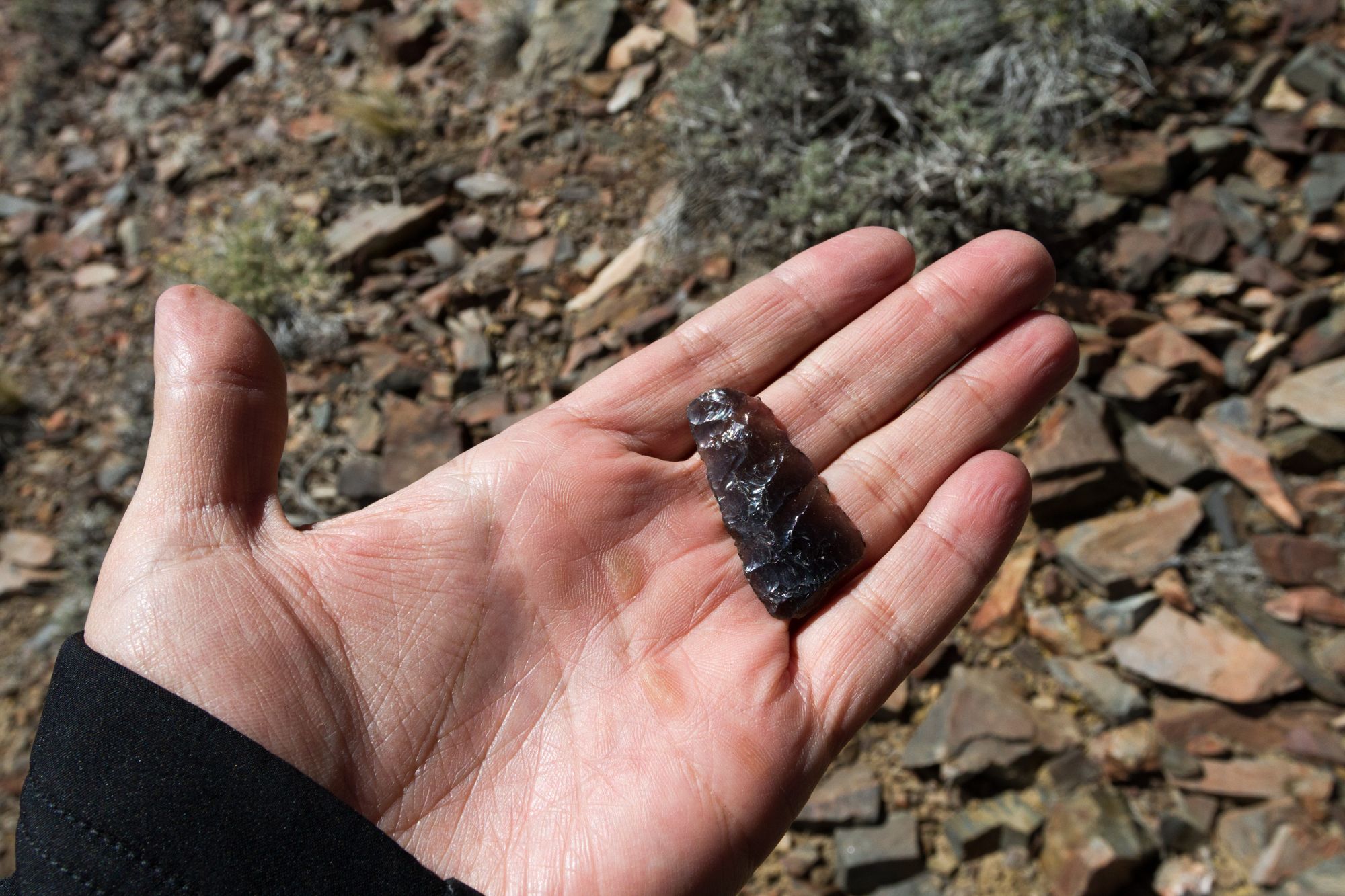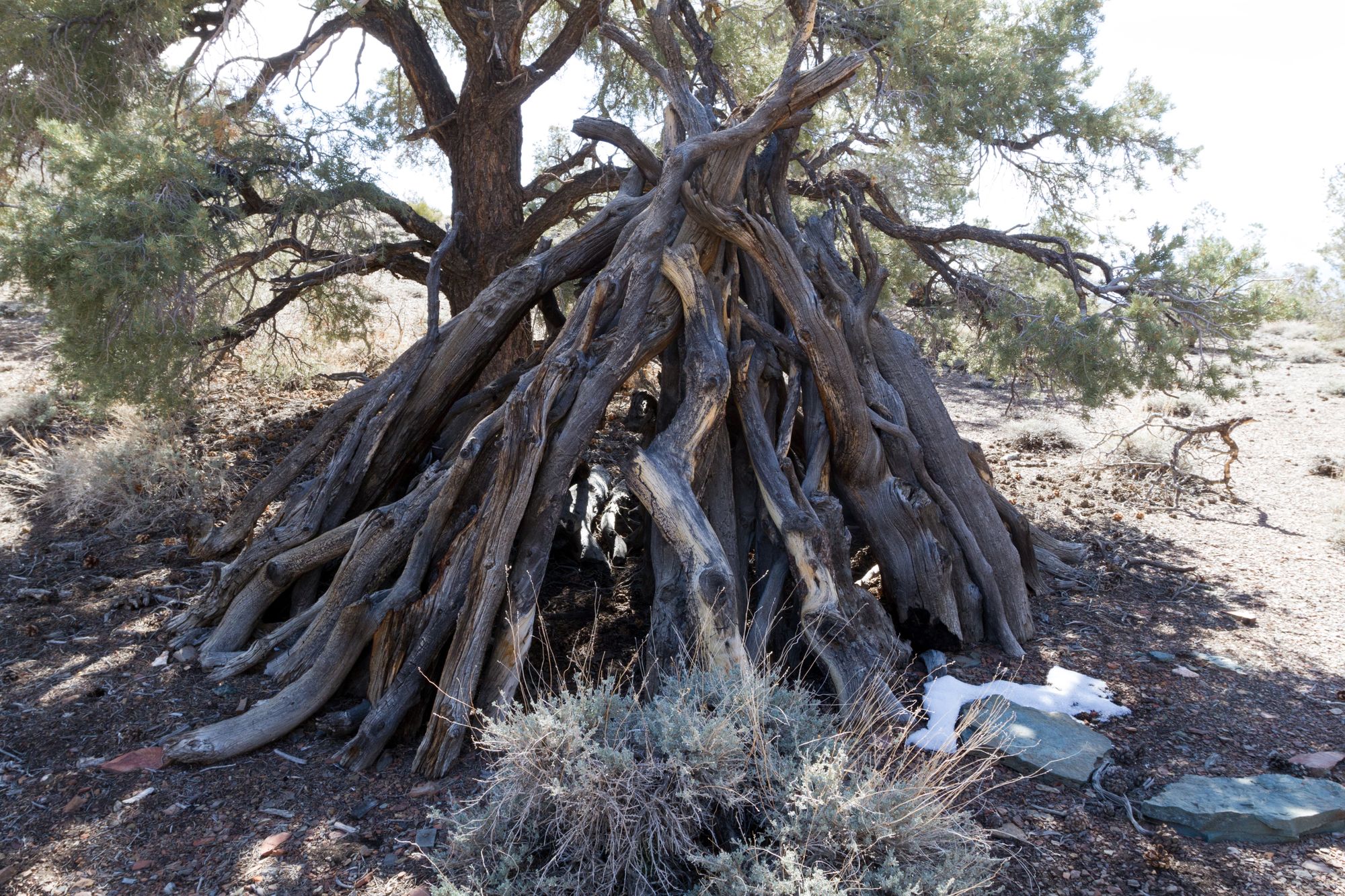I had known about a wickiup, a traditional Native American dwelling high in the White Mountains of California, for a while. I thought it would be an interesting find, so I decided to go on a hike to see if I could track it down.
The information I had didn’t give me the exact location, and I really didn’t know if I would be even close (which is the case more often than not). But I still thought I might have enough clues to find it. This was not an area I had been to before, so after studying topo maps for a while, I took a guess where it might be and planned my trip. If nothing else, it would be a pleasant hike in the pinyon pine forest.
After driving on some rough 4WD roads, I reached my trailhead and started hiking. The air was crisp, and there were a few snowbanks lingering on the ground. I hiked uphill and cross-country, and along the way, I came across a faint old trail. It was a surprise to find. As I wondered if it could be of native origin, I looked down and spotted an obsidian point.
Not soon after, I crested a small saddle on the ridge. Here, in the middle of a small clearing of pinyon, sat a faint rock circle. What a nice find. Things were certainly going in the right direction! I had to be on the right track.

As I left the saddle, I lost sight of the old trail. I made my way across the mountainside, over loose Cambrian limestone and shale rocks, dodging trees, brush, and the occasional snow patch. And after a few more miles over hill and dale, I saw a small clearing ahead. This was my target search area. When I finally reached the area, I slowed down and began looking around more carefully. Almost immediately, I found an old camp, and it was historical. I spotted an old Hole-and-Cap style tin can with soldered side seams. This type of can was among the first ever made. Seeing this doesn’t preclude a Native American presence, however, as in historical times, they would often trade or work for canned foods. But this also meant the camp could have just belonged to an old mining prospector.
I was a little less confident now but continued my search. I wouldn’t have to wait for long, though, I spotted something in the shade of a pinyon pine a few hundred feet away. It was a tiny house of pinyon.

The wickiup consisted of pinyon branches formed in the cone shape of a teepee. They probably once had their bark still on them and were covered by animal skins. A look inside the small structure showed that nothing remained. I checked around and couldn’t find any other artifacts other than an occasional flake. This surprised me, as I expected to see at least a few artifacts from habitation.
I searched the rest of the flat. I came across a few rock alignments, another rock circle, and the neck of a dark olive-green bottle. The lip on the bottle was handmade and, again, was very old.
I decided to take a break and have lunch under a pine tree. This little camp had a beautiful view and a cool breeze. It was a pleasant spot, but I could imagine that living there would have been a hard life.
After lunch, I hiked back to my truck and startled a couple of mule deer along the way. They dashed off into the trees, disappearing into the trees as quickly as they appeared. I thought about how the wickiup was more likely used for hunting and gathering pine nuts by the Western Shoshone than a permanent camp. This might explain the lack of artifacts or any other structures up there.
Overall, it was a great hike to a neat and little-known site. No directions to this site.



